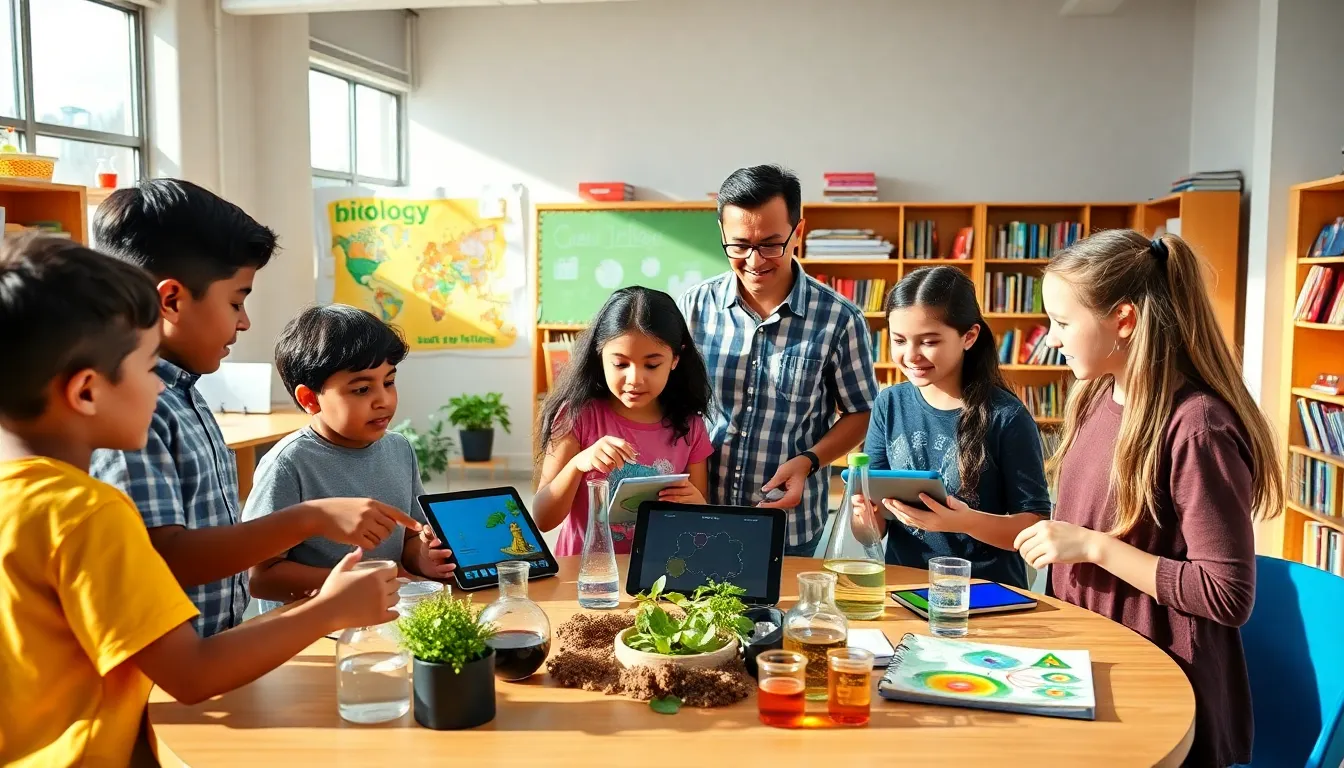Table of Contents
ToggleIntegrated science education is an evolving approach aimed at enhancing the way science is taught and understood. As the challenges of modern science education shift, platforms like Redwebzine are beginning to play a pivotal role in addressing these needs. This article delves into the concept of integrated science education, the specific contributions of Redwebzine, and the strategies that can bolster its implementation in classrooms. Besides, it will explore future trends in the field, positioning integrated science education as a key element for student engagement and success.
Understanding Integrated Science Education

Integrated science education combines elements from various scientific disciplines to provide students with a holistic understanding of science as it relates to the natural world. Rather than compartmentalizing subjects like biology, chemistry, and physics, integrated science allows for a more seamless exploration of complex scientific concepts. This approach encourages students to make connections between different scientific fields, fostering critical thinking and problem-solving skills. Traditionally, science education has been theory-heavy, often without practical applications in real-world scenarios. Integrated science education aims to bridge this gap, emphasizing hands-on learning experiences and interdisciplinary projects that resonate with students’ lives and the environment.
The Role of Redwebzine in Science Education
Redwebzine plays a significant role in enhancing integrated science education through diverse content that appeals to various learning styles. By curating articles, discussions, and multimedia resources, Redwebzine serves as a comprehensive platform for both educators and students seeking engaging science content.
Benefits of Integrated Science Education
- Holistic Learning: Integrating various scientific disciplines promotes a deeper understanding of how science operates in the real world. Students learn to connect concepts, which enhances retention and application.
- Engagement: Interactive and relatable content found on platforms like Redwebzine attracts students’ attention, making them more eager to learn.
- Skill Development: Students develop critical thinking and collaboration skills through project-based learning, preparing them for future scientific challenges.
Challenges and Solutions in Implementation
Even though its advantages, integrating science education faces several challenges:
- Curriculum Development: Creating a curriculum that effectively integrates various science domains can be daunting.
- Teacher Training: Educators often need professional development to effectively carry out integrated strategies.
- Resource Availability: Access to diverse teaching materials can be limited.
Solutions include professional development workshops for teachers and enhanced collaboration among educational institutions to share resources and best practices.
Strategies for Effective Integration
Implementing integrated science education successfully requires well-thought-out strategies. Here are some effective practices:
Case Studies and Examples
- Project-Based Learning: Schools that have adopted project-based learning approaches report higher student engagement. For example, a school might organize a project where students design an environmentally friendly habitat.
- Collaborative Learning: Pairs or groups of students from different science backgrounds can collaborate on experiments, such as studying the effects of acid rain, drawing on biology, chemistry, and physics.
- Real-World Applications: By incorporating current scientific issues, such as climate change or technological advancements in medicine, teachers can create lessons that are relevant and impactful.
Future Trends in Integrated Science Education
Looking ahead, several trends are likely to shape the future of integrated science education.
- Technology Integration: Online platforms like Redwebzine will increasingly provide interactive resources, simulations, and virtual labs that enhance the learning experience.
- Personalized Learning: As educational technology evolves, personalized learning paths will allow students to explore scientific topics relevant to their interests, promoting a deeper engagement.
- Emphasis on Sustainability: Future curricula will likely incorporate more sustainable practices, meshing environmental science with social studies and ethics.
Conclusion
To conclude, integrated science education represents a transformative approach to teaching that prepares students for the complexities of the modern world. Platforms like Redwebzine are integral to this movement, offering invaluable resources that help this interdisciplinary approach. As educational practices evolve, embracing integrated strategies will not only enhance students’ understanding of science but will also equip them with the skills needed to tackle future challenges.




